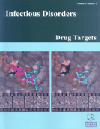
Full text loading...
We use cookies to track usage and preferences.I Understand
SNP based association studies have revolutionized the field of biomedicines. Enteric fever is a systemic disease with etiologic agent Salmonella enterica serovar typhi and paratyphi. It is a serious health issue worldwide and presents wide variations in incidence, rates, and severity. Previous investigations revealed that genetic variations may lead to susceptibility to typhoid fever. The current study was performed to investigate the potential association of PARK2_e01(−697) polymorphism with the susceptibility to typhoid in the Punjabi population.
For this case-control study, blood samples obtained from typhoid patients with positive Typhidot or blood culture test (n=72) and healthy controls (n=73) were processed for DNA extraction. The polymorphism PARK2_e01(-697) analysis was carried out by using PCR and RFLP.
No allelic association was found between PARK2_e01(-697) and susceptibility to typhoid fever in the understudy population.
This case control study is the demonstration of the non-association of PARK2_e01(-697) with typhoid in the Pakistani population. Future research, using larger population size, will help to elucidate the role of PARK2_e01(-697) polymorphism in typhoid pathogenesis.

Article metrics loading...

Full text loading...
References


Data & Media loading...
Supplements

